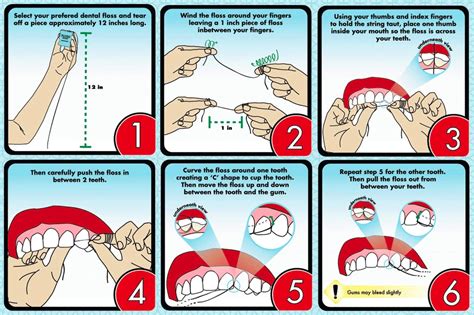The Easy Way to Remove Stubborn Floss
Dental floss is a crucial tool for maintaining optimal oral hygiene, yet sometimes, even the most diligent flossers encounter the frustrating problem of stubborn floss getting stuck between teeth. This can cause discomfort, potential gum irritation, and even a bit of panic. But fear not! This comprehensive guide will explore the easy and effective ways to remove that pesky, trapped floss, ensuring your dental hygiene routine remains smooth and painless.
Why Does Floss Get Stuck?
Before diving into removal techniques, understanding why floss gets stuck is crucial. Several factors can contribute to this common problem:
- Aggressive flossing: Using excessive force or sawing the floss back and forth can shred the floss, increasing the likelihood of it getting stuck.
- Improper flossing technique: Incorrectly guiding the floss between teeth can lead to snagging on gum tissue or getting wedged in tight spaces.
- Waxed vs. unwaxed floss: Unwaxed floss, while sometimes touted for its cleaning power, is more prone to shredding and sticking.
- Dental work: Bridges, crowns, or orthodontic appliances can create spaces where floss can easily get caught.
- Tight contacts between teeth: Naturally tight spaces between teeth are a common cause of floss getting stuck.
How to Remove Stuck Floss: Step-by-Step Guide
Here’s a methodical approach to removing that stubborn floss, starting with the gentlest methods:
-
Gentle Rocking and Pulling: Before resorting to more forceful methods, try gently rocking the floss back and forth. This may loosen the trapped section and allow you to carefully pull it free. Avoid jerking or pulling too hard, as this could damage your gums.
-
Dental Floss Picks: If the floss is only slightly stuck, consider switching to a dental floss pick. The rigid nature of the pick can provide better control and easier access to the trapped floss.
-
Water Flosser (Irrigator): A water flosser can be highly effective. Direct the stream of water onto the trapped floss, and the pressure may dislodge it. This method is particularly useful for those with sensitive gums.
-
Interdental Brush: If you have a significant gap between your teeth, an interdental brush (a small brush designed to clean between teeth) might be a helpful alternative or addition to flossing. Its shape and bristles can navigate tighter spaces and help dislodge the trapped floss.
-
Dental Pick/Tweezers (Careful!): As a last resort, and only if the floss is easily visible, consider using a dental pick or fine-tipped tweezers. Exercise extreme caution to avoid injuring your gums. Carefully maneuver the tool to grasp and gently remove the floss.
-
Contact Your Dentist: If you cannot remove the floss yourself, especially if you experience significant discomfort or bleeding, schedule an appointment with your dentist. They have the tools and expertise to safely remove the floss and check for any potential underlying issues.
Preventing Floss from Getting Stuck
Prevention is always better than cure. Here are some tips to minimize the chances of floss getting stuck:
- Use the correct flossing technique: Gently curve the floss around each tooth, hugging the gumline. Avoid sawing back and forth.
- Choose the right type of floss: Waxed floss is generally less likely to shred and get stuck. Experiment to find a type that suits your needs.
- Use fresh floss: Using a new section of floss for each tooth prevents the build-up of debris that can contribute to snagging.
- Maintain regular dental checkups: Regular visits to your dentist help identify potential problems early on, including issues that can make flossing difficult.
FAQs: Addressing Common Concerns
What if I swallowed a piece of floss?
While swallowing a small piece of floss isn’t usually a cause for serious concern, it’s not ideal. Most dental floss is non-toxic, and it will likely pass through your digestive system. However, if you swallow a large piece or experience any digestive issues, consult your doctor.
Can stuck floss cause gum disease?
Yes, prolonged irritation from trapped floss can contribute to gum inflammation and potentially exacerbate gum disease. It's essential to remove any stuck floss as quickly and carefully as possible.
My floss always shreds. What should I do?
Try switching to a waxed floss or a different brand. Also, ensure you’re not using excessive force while flossing. Gentle, controlled movements are key.
How often should I floss?
Dental professionals recommend flossing at least once a day, ideally before brushing at night.
By following these tips and techniques, you can confidently tackle stubborn floss and maintain a healthy, effective dental hygiene routine. Remember, consistent and gentle flossing is essential for preventing gum disease and keeping your smile radiant.

